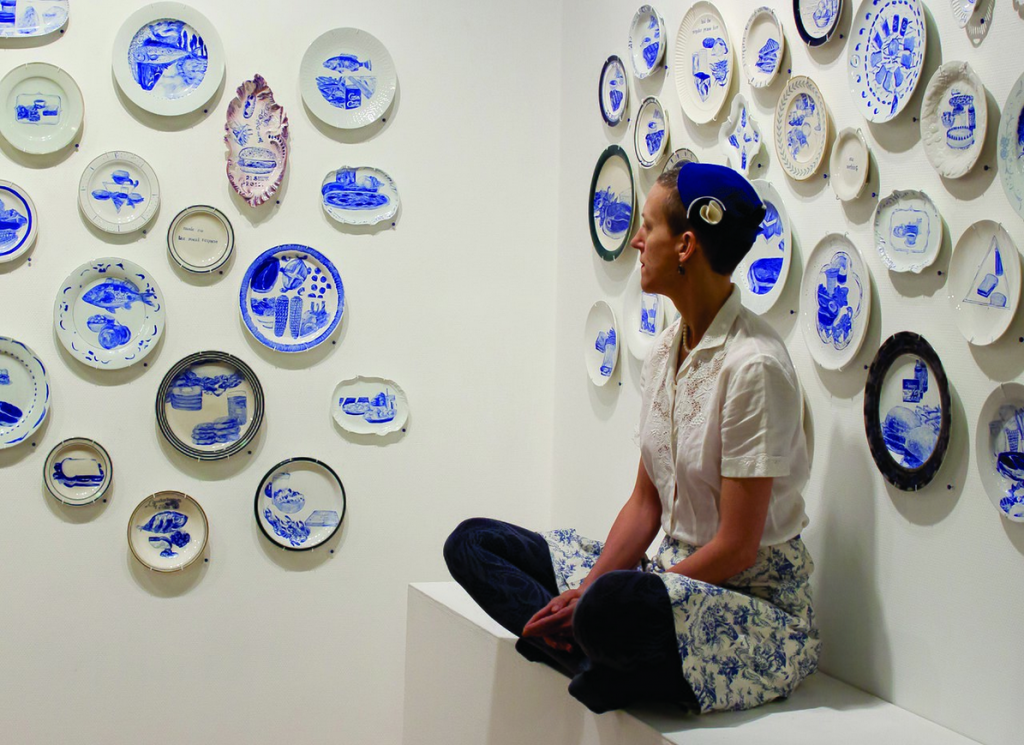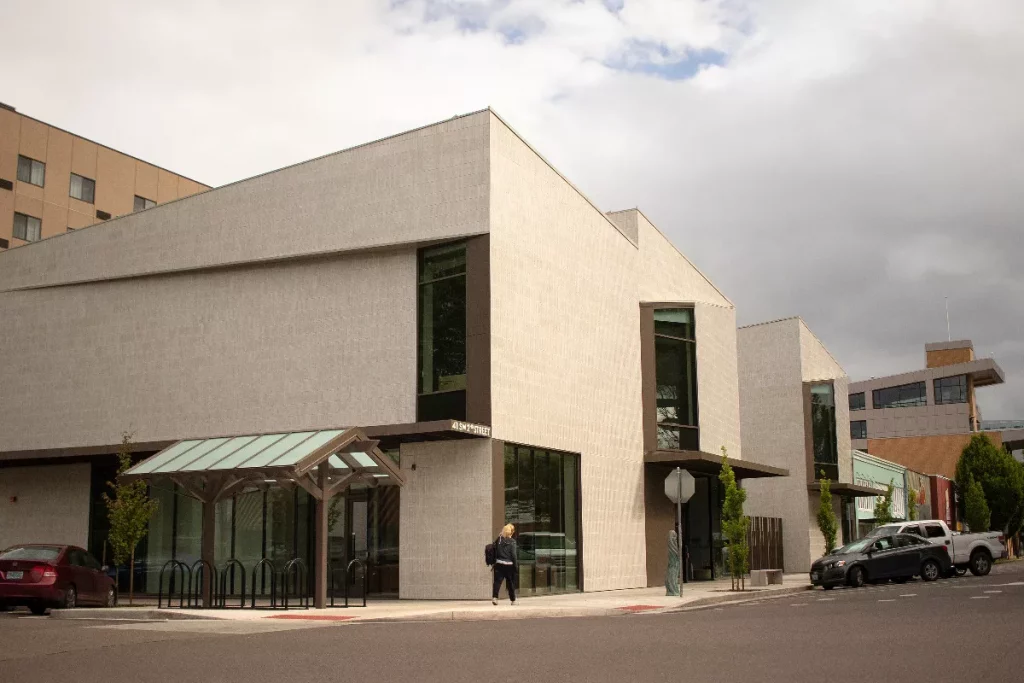 The Corvallis Museum currently displays the remaining 200 plates from local artist Julie Green’s “The Last Supper”. It is the museum’s debut temporary art exhibit.
The Corvallis Museum currently displays the remaining 200 plates from local artist Julie Green’s “The Last Supper”. It is the museum’s debut temporary art exhibit.
Green, who also worked as a professor at Oregon State University for two decades, passed away this past October from ovarian cancer. The exhibit was recently donated by the Last Supper Trust and will be open to the public until July 3.
With “The Last Supper” collection, Green brought to light the issue of our nation’s capital punishment – the notion of sentencing offenders to the death penalty. Using cobalt blue mineral paint and second-hand ceramic plates, Green illustrated the last meals of several death row inmates. Additionally, they included the inmates’ dates of execution and the states in which they received this punishment.
Green’s inspiration originated from an Oklahoma newspaper, which featured final meals of death row offenders. According to Green, Oklahoma’s execution rate per capita is higher than that of Texas. However, death row last meals in Texas are more widely talked about.
As of February of last year, the United States had seen over 1,500 executions since 1976. Over seven percent of those (112) took place in Oklahoma, according to Green’s reference to the Death Penalty Information Center.
In total, Green painted 950 plates with the last meals of death row offenders from 36 different states. They researched for the collection via various reading materials and prisons. Green’s ultimate goal for the project was to “end the series when we abolish capital punishment, or at 1,000 plates, whichever happens first.”
Since the project’s inception, 23 states – and the District of Columbia – have since eliminated capital punishment and the death penalty.
“Why do we have this tradition of final meals, I wondered, after seeing a request for six tacos, six glazed donuts and a cherry Coke,” said Green in their artist statement. “Twenty-one years later, I still wonder.”
“Julie Green was committed to this art project/social justice commentary for over 20 years,” said Mark Tolonen, Curator of Exhibitions for the Benton County Historical Society. “Julie is gone, but their work continues to inspire reflection, conversations, and maybe one day, legislation.”
“We were approached by the gallery that has represented Julie Green in the past; they really wanted to see Julie’s final works shown in Corvallis, as did their husband,” said Jessica Hougen, Executive Director of the Benton County Historical Society.
The gallery wanted to honor Green and their decades of hard work by showing the exhibit in its home city. The New York Times and NPR are two of several other platforms in which Green’s work has been displayed.
 According to Hougen, “The Last Supper” is the very first – but not last – temporary exhibit held at the Corvallis Museum. Since the museum is run by the Benton County Historical Society, previous exhibits were permanent and included local history.
According to Hougen, “The Last Supper” is the very first – but not last – temporary exhibit held at the Corvallis Museum. Since the museum is run by the Benton County Historical Society, previous exhibits were permanent and included local history.
“We have always felt that art is an integral part of the community and indeed has a place in community history,” said Hougen.
Located at 411 SW 2nd Street, the Corvallis Museum is open from Wednesday through Saturday between the hours of 10:30 a.m. and 4:30 p.m., and on Sundays from noon to 4:30 p.m.
Free admission is available to those who are Benton County Historical Society members, those 18 and younger, and OSU and Linn-Benton Community College students with valid student identification.
By: Rebekah Harcrow
Do you have a story for The Advocate? Email editor@corvallisadvocate.com


